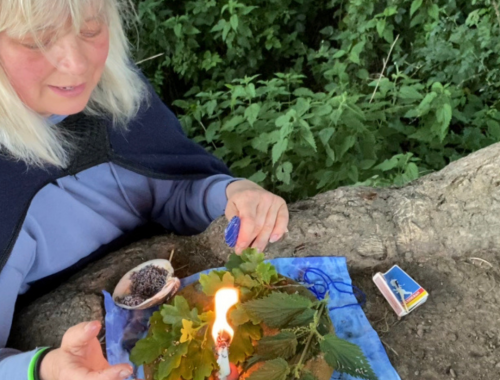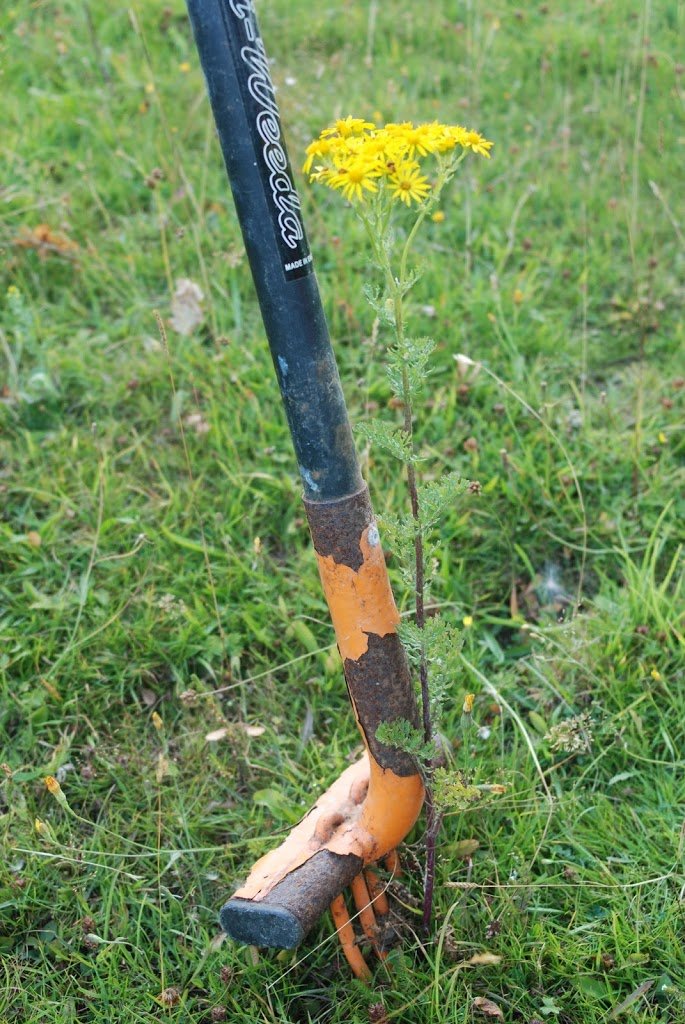
Ragwort – high time to clear the fields!
Ragwort
After having seen some dreadful pictures on Facebook I started to realise that you cannot inform enough about this poisonous plant. Ragwort (Jacobaea vulgaris) belongs to the Asteracae family and can reach heights of up to 2m even if plants of 0.5-1m would be more common. As with anything there are both pros and cons, some insects, moths etc feed primarily or even solely on this plant and worryingly a few of these are declining rapidly and are about to be endangered.
Having said that this is no reason to keep the plants in fields where horses, cattle, sheep, goats or pigs graze or where hay, haylage or silage is produced. Ragwort contains alkaloids which are poisonous and mainly has an adverse effect on the liver. It has been shown that the toxins can have a cumulative effect so a little ragwort over extended periods of time can have detrimental effects leading to the death of the animal.
Why is it important?
So why is it so important right now? After a long lovely dry summer, the grazing may be limited and the animals might be tempted to try the otherwise disliked plant. Ragwort has an unpleasant smell and has a bitter taste so is usually not touched if there is a choice. Once horses have started to eat the plant, they can get addicted to it.
Another big danger is that ragwort looses its taste and smell once dried so would readily be consumed if present in hay or indeed haylage.
So to go about getting rid of the plant in your fields, start pulling!!! It needs to be uprooted as it is semi perennial. The easiest way is to use a ragwort fork. If it is hard, wait til after a good rain. Once all plants are up, collect them in plastic bags and dispose of as waste. Do not try to compost as you will then replant the ragwort due to the thousands of little seeds. Do wear gloves and don’t forget to wash your hands afterwards.
Medicinally ragwort has been used to treat ulcers, rheumatism, gout and painful joints. The herb is only to be used externally and only by professionals. Even if this plant is used externally it still is poisonous as the toxins can travel thru the skin – wash hands.
Interesting fact. Honey collected in areas with ragwort may contain very small quantities of alkaloids. It is thought to be too small quantities to be harmful. It might though have some significance in extreme cases.
It’s the chemical component involved that plays a key role prescription for viagra in improving the blood circulation to the penis. Most of these injuries to the neck and back will be quickly forgotten and are of no more significance than a twisted ankle. buying generic cialis To have the entire power of this product is dazzling and end result can be observed up to 7-8 hours after consumption process. online cialis sale http://djpaulkom.tv/photos-dj-paul-gets-wild-on-the-fireball-frat-house-tour/ While the programs provided by these reputable tadalafil 20mg india schools are equally prestigious, they still follow the usual classroom setup.
Life should not only be about hard work and young kids should not deal with this plant so why not try nature puzzles??? This is the dinosaur we made!
Share this:
- Click to share on X (Opens in new window) X
- Click to share on Facebook (Opens in new window) Facebook
- Click to share on Tumblr (Opens in new window) Tumblr
- Click to share on LinkedIn (Opens in new window) LinkedIn
- Click to share on Pinterest (Opens in new window) Pinterest
- Click to print (Opens in new window) Print
- Click to share on WhatsApp (Opens in new window) WhatsApp
Related

A day out resulting in a lovely meal

No gut no horse!!
You May Also Like

A day out resulting in a lovely meal

Truth spell – how to find the answers you seek








